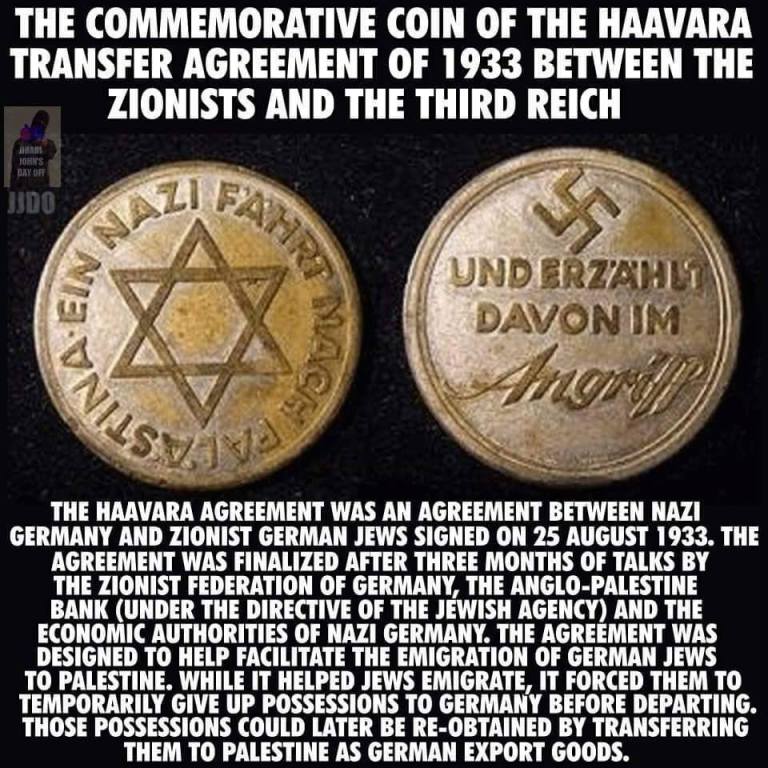
The Haavara (Transfer) Agreement
See: Final Solution Myth of Hitler/Nazi extermination of homosexuals Nazi-Zionist co-operation Wannsee Conference Funding of Hitler/Nazis Trading with the enemy (WWII)
The Transfer (Haavara) Agreement of 1944 was one of the most important incidents in the Holocaust framework. Under this agreement some 2.5 million Jews were to be traded for trucks. The agreement never came to fruition because the Zionists could not take that number of Jews to Palestine. (25-6853, 6854) [Joseph G. Burg] The 'False News' Trial of Ernst Zündel -- 1988
[2016 April] Livingstone vindicated: There WAS a Nazi-Zionist agreement and
Hitler DID support it
The Haavara Agreement was an agreement between Nazi Germany and Zionist German
Jews signed on 25 August 1933.
The agreement was finalized after three months of talks by the Zionist
Federation of Germany, the Anglo-Palestine Bank (under the directive of the
Jewish Agency) and the economic authorities of Nazi Germany.
The agreement was designed to help facilitate the emigration of German Jews to
Palestine.
While it helped Jews emigrate, it forced them to temporarily give up possessions
to Germany before departing. Those possessions could later be re-obtained by
transferring them to Palestine as German export goods.
The agreement was controversial at the time, and was criticised by many Jewish
leaders both within the Zionist movement and outside it.
Hitler’s own support of the Haavara Agreement was unclear and varied throughout
the 1930s.
Initially, Hitler criticized the agreement, but reversed his opinion and
supported it in the period 1937-1939. Source: Haavara
Agreement – Wikipedia, the free encyclopedia
